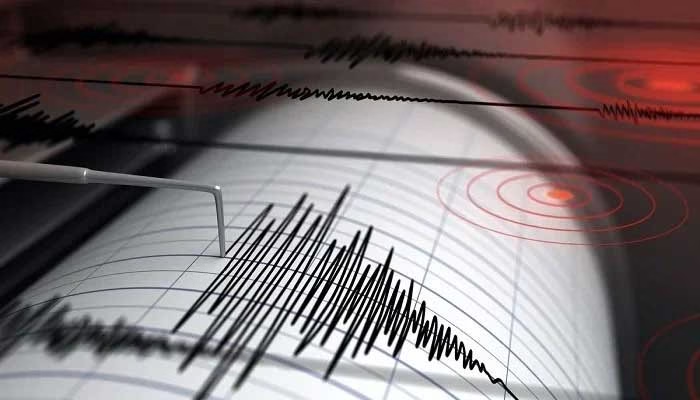Earthquake in Pakistan has once again rattled major cities, with a 5.2-magnitude quake striking Islamabad, Rawalpindi, and parts of Khyber Pakhtunkhwa on Tuesday morning. According to the Pakistan Meteorological Department (PMD), the earthquake originated from the Hindu Kush region of Afghanistan at a depth of 190 kilometres. Thankfully, no immediate loss of life or property has been reported.
Details of the Recent Quake
The tremors were felt at 10:20 am, spreading across Peshawar, Mansehra, Swat, Chitral, and Abbottabad. The deep epicentre in the Hindu Kush region meant the impact was widely felt, but the destructive force was reduced compared to shallow quakes. Residents in many areas reported mild shaking of homes and offices, causing panic but no significant damage.
A Series of Earthquakes in 2024
This 5.2-magnitude earthquake in Pakistan follows another 5.5-magnitude tremor earlier in August that shook northern parts of the country. That quake, too, originated in the Hindu Kush mountains, with a depth of 114 kilometres. Cities including Islamabad, Rawalpindi, Azad Jammu and Kashmir, Charsadda, and Karak reported experiencing strong jolts.
The frequency of these tremors is a reminder of Pakistan’s seismic vulnerability. In the past few months alone, the country has experienced multiple earthquakes of magnitudes ranging between 4.7 and 5.5.
- On June 11, 2024, a 4.7 quake struck Peshawar.
- In May 2024, a 5.3 quake was recorded in Islamabad, shaking districts across KP including Swat, Nowshera, Mardan, and North Waziristan.
- In April 2024, two strong quakes of magnitudes 5.5 and 5.3 hit within days of each other, impacting KP, Punjab, Azad Kashmir, and Islamabad.
These repeated tremors highlight the seismic activity along the Hindu Kush region, a historically active fault zone.
Why Pakistan is Prone to Earthquakes
Geographically, Pakistan lies on a major tectonic boundary between the Indian and Eurasian plates. This makes northern Pakistan particularly prone to seismic activity. The pressure from these colliding plates often releases energy in the form of earthquakes, which explains why tremors are common in KP, Gilgit-Baltistan, and Azad Kashmir.
Karachi has also experienced unusual seismic activity in 2024, with over 30 mild tremors reported in just a few days. Experts suggest that this could be linked to movement along the Landhi Fault Line, a relatively dormant fault that has shown unexpected activity.
Historical Context of Earthquakes in Pakistan
The threat of an earthquake in Pakistan is not new. The country has witnessed several devastating quakes in its history. The most tragic was the 2005 Kashmir earthquake, measuring 7.6 on the Richter scale, which killed more than 80,000 people and displaced millions. More recently, the 2015 Hindu Kush earthquake caused widespread damage and hundreds of fatalities across Pakistan and Afghanistan.
These events serve as a grim reminder of the destructive potential earthquakes carry, especially in densely populated areas with vulnerable infrastructure.
Safety and Preparedness
While recent tremors such as the 5.2-magnitude earthquake in Pakistan have not caused casualties, they raise important questions about preparedness. Experts emphasize the need for:
- Earthquake-resistant construction: Many buildings in northern Pakistan do not follow seismic safety codes, increasing the risk of collapse during strong quakes.
- Public awareness campaigns: Citizens must know safety measures such as “Drop, Cover, and Hold On” during an earthquake.
- Strengthening emergency response: Rapid evacuation, medical aid, and communication systems are vital during disasters.
Pakistan’s location makes it impossible to prevent earthquakes, but damage can be reduced through planning, resilient infrastructure, and community training. Scientists continue to monitor seismic activity in the Hindu Kush region closely, as it remains one of the most active seismic zones in South Asia.
The repeated earthquakes in Pakistan this year highlight the urgent need for investment in disaster preparedness. As cities like Islamabad, Peshawar, and Karachi expand rapidly, ensuring earthquake resilience must become a national priority.
The recent earthquake in Pakistan has once again reminded the nation of its seismic risks. Although no casualties were reported from the 5.2-magnitude tremor, the frequency of these quakes in 2024 shows a concerning pattern. With Karachi experiencing unusual tremors and northern regions repeatedly shaken by quakes, strengthening preparedness and safety measures is crucial.
Living on a major fault line means earthquakes will always be part of Pakistan’s reality. However, through proactive planning, strict building codes, and community education, the impact of future disasters can be minimized.


